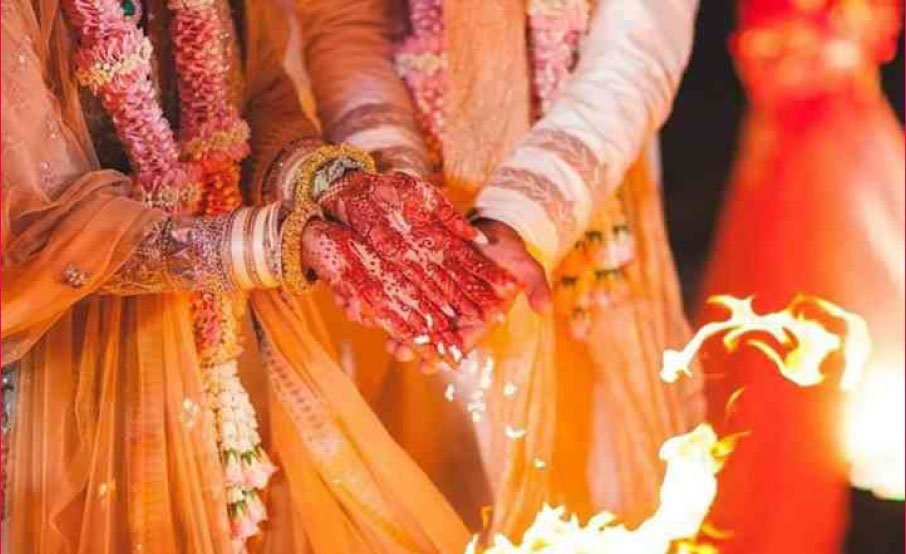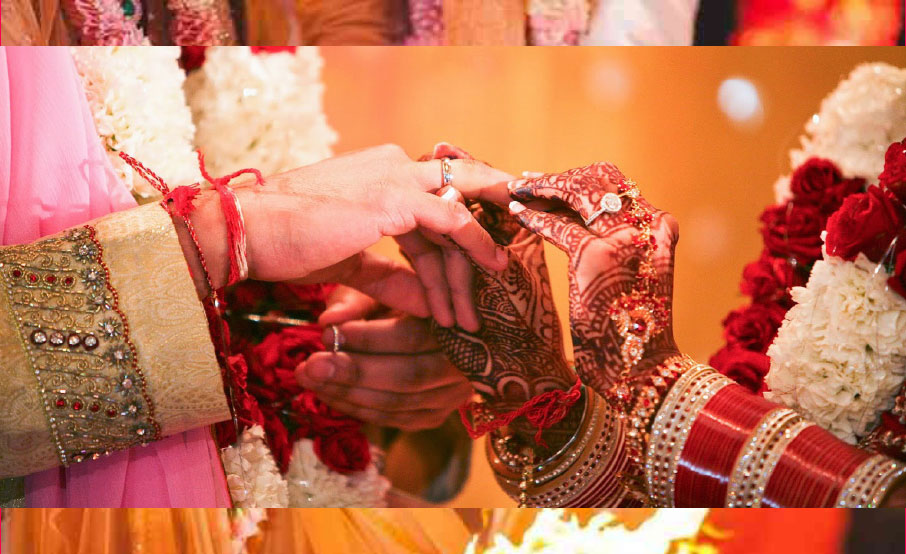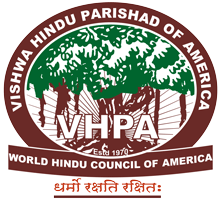 With a significant presence on TV and in the movies plus the growing Indian Diaspora, the Hindu wedding festivities are becoming well known and famous throughout the world. They are colorful, enjoyable, with delicious food, lots of pageantry and music.
With a significant presence on TV and in the movies plus the growing Indian Diaspora, the Hindu wedding festivities are becoming well known and famous throughout the world. They are colorful, enjoyable, with delicious food, lots of pageantry and music.
The ceremony itself originated in Ṝgveda and is the most ancient and spiritual ceremony in the world. The various rituals bring out the best of the Sanātana Dharma philosophy of Life while binding the couple physically, mentally and spiritually. They induct the couple into Gṛhastha Āśrama, the lives of married householders, which is the bedrock of any stable society.
The wedding ceremony is the most important of all wedding events. However, it may not be well structured to meet the needs of the modern demographics, especially in the Western Countries like America. Many ceremonies lack the formality, discipline, logistics and respect that are so necessary if we want to create a positive image of our culture.
It is probably so because of the way many ceremonies are planned and conducted, not only in India but also in other countries. The duration of the rituals can be too long and fragmented. The audience may not understand the meaning of the Sanskrit Mantras but may remember only some interesting traditions, like stealing the groom’s shoes! This lack of understanding, even with well-written programs, may allow guests to socialize, attend to their mobile phones or even munch during the ceremony. Many people find the ceremony boring, skip it altogether and attend only the reception.
Thus, we may be missing an excellent opportunity to bring out the beauty of this ceremony to familiarize people about the Sanātana Dharma, especially to the second or third generation Hindus and to their Western friends.
Any wedding ceremony is an auspicious event. After all, it is the wedding of Lakṣmī and Viṣṇu as the bride and the groom! Therefore, the parents, the couple and the Paṇḍita have to make every effort to make it a dignified and respectful event. Their vision of a beautiful wedding will dictate many choices such as the venue, events, maṇḍapa design etc. For example, they can plan the ceremony indoors to avoid potential inclement weather, external distractions and other logistic issues. The maṇḍapa can be set up on a stage with no pillars to create good visibility of all rituals. The ceremony can be timely and seamless from processional to recessional with a good logical flow.
By tailoring the ceremony to the specific couple, the Paṇḍita, as the “Master of the Ceremony”, can bring out the best of their Hindu heritage and Western upbringing. He or she can effectively communicate to the audience the deep significance of each step. Although the ceremony is primarily for the couple, the Pandit can include the parents, the siblings and the audience in various rituals as necessary. After all, it is not just the wedding of the couple but also the union of two families with the guests as witnesses and their social supporting structure.
 A well-prepared ceremony takes an hour or so with all the important steps. Many rituals, even the Vivāha Homa, look beautiful, especially for photography, with the couple and others in standing positions. This simple fact shows respect for our deities as well as the ceremony and ensures good visibility that directs everybody’s attention on the rituals. If properly conducted, the ceremony can result in a pin-drop silence with serene atmosphere.
A well-prepared ceremony takes an hour or so with all the important steps. Many rituals, even the Vivāha Homa, look beautiful, especially for photography, with the couple and others in standing positions. This simple fact shows respect for our deities as well as the ceremony and ensures good visibility that directs everybody’s attention on the rituals. If properly conducted, the ceremony can result in a pin-drop silence with serene atmosphere.
The pre-wedding pujas like Grahaśānti are an excellent way to review the fundamentals of the Sanātana Dharma with the youngsters. We also need to perform previous Saṃskāras if the couple has not undergone them earlier. We should try to remove the misconceptions that the Saṃskāras like the Upanayan and Samāvartana are only for the Brāhmaṇa boys. They are for boys and girls from all Varṇas to develop their spiritual and educational upbringing.
The Hindu weddings, especially in the western countries, are a fusion of multiple cultures, generations, religions, races, traditions and customs. Almost 50% of weddings in America are between Hindus and non-Hindus. It is important that we conduct the ceremony in a non-dogmatic, non-proselytizing, spiritual and respectful way. A pragmatic, all-inclusive ceremony can bring together the authenticity of the Vedic rituals that would appeal to the present demographics of the couple and that of the attendees.
It takes a village to raise a child but it takes the whole society to strengthen the marriage institution. It should be an honor to go to weddings to witness the induction of the couple into the second phase of their lives and bless them for a long, happy and blissful married life.
ABOUT THE AUTHOR
Mr. Padmakar Gangatirkar, an engineer by profession, has been officiating Hindu Weddings in North America for over 20 years. He has developed a unique style of officiating them with a well-balanced combination of rituals and interesting delivery that connects with the couple, the parents and the guests alike. He conducts the weddings based on authentic scriptures with focus on their significance with detailed logistical considerations. He is the author of the book, “Tying the Perfect Knot, A Practical Guide to Hindu Weddings” available on Amazon.
Please send your comments to pamag43@gmail.com.

